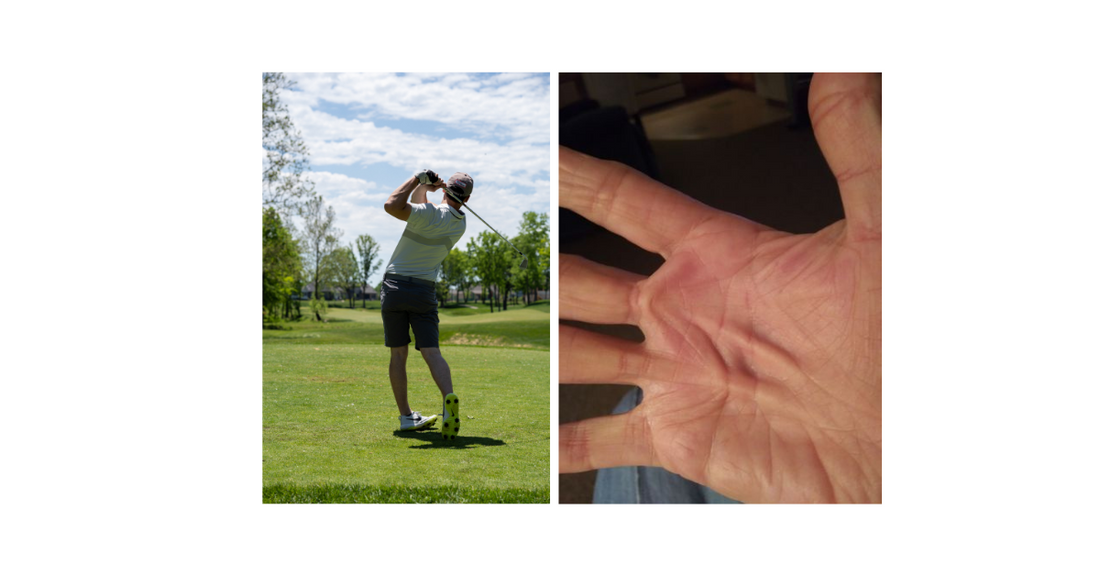
Are Golfers More Likely To Develop This Hand Condition?
Do these symptoms sound familiar?
Are your fingers being pulled inward? Can you no longer place your hand on a flat surface? If so, you may be suffering from a disease known as Dupuytren's Contracture. This disease is a disabling hand condition that causes connective tissue under the palm to thicken and tighten.
If we take a look at the factors that can increase someone's chances of developing Dupuytren’s contracture, it's clear to see that anyone can be at risk. As we've mentioned in previous blogs, Dupuytren’s contracture is a disease affecting the palm and the fingers. In severe cases, it can worsen continually until it causes complete immobility in the hands.
Although there is no data that confirms whether or not golfers can develop Dupuytren’s contracture, there is a chance that playing sports with a heavy reliance on your hand use can aggravate this disease. For this reason, professional golfers who handle clubs of various sizes are more likely to suffer from severe Dupuytren’s that can create problems and make everyday tasks difficult to perform.
According to a study, roughly 60% of Dupuytren's cases cause people difficulty with sports such as golf.
How Can Golfers Avoid Dupuytren’s Contracture?
There are very few studies on the preventive measures that can help golfers avoid Dupuytren’s contracture. According to the research that does exist, there is no definitive way for golfers to avoid the development of Dupuytren’s contracture.
However, a few preventive measures can help ease discomfort in more aggravated cases of Dupuytren’s contracture. At the very least, this includes physical exercise after every golfing game along with some of the following practices:
Avoid Over-Exhaustion
Most of the time, people over-exhaust themselves while participating in sports such as golfing. This means they don't pay attention to the signs of their body telling them it's too tired or in pain.
It's first and foremost important to limit the amount of time you keep your fingers in the same position. This can help eliminate the occurrence of cramped or exhausted fingers that remain stiff long after you stop playing and assume different positions. Also, remember to stop playing when your fingers or hand starts to ache.
Opt For Different Golfing Clubs
Another recommendation that many people who suffer from Dupuytren’s contracture offer is to change the type of golfing club that you use during practice and other types of play. A golf club with a thick rod is often much more effective at preventing your fingers from being excessively bent for long periods of time. This is also a helpful step to take for those who already have Dupuytren’s contracture and struggle to hold on to their golfing clubs while golfing and moving them around.
Never Ignore Warning Signs
Paying close attention to your health is another of the major preventive measures to assist with Dupuytren's. No habit or practice is better than recognizing the signs early on. The very first symptom or sign that appears as a result of Dupuytren’s contracture is the occurrence of nodules and small bumps or lumps in the palm. Always keep an eye out for any signs that are unusual or may seemingly appear out of nowhere. They may save you from a life-long disability and preserve a great range of your functionality during daily tasks such as self-care, cooking, driving, and working.
Use the video below and all our other resources to educate yourself even more on how to best manage Dupuytren's. Dupuytren's contracture cream is another helpful way to ensure this condition does not worsen to the point of immobility. Stay aware and talk to your doctor if you want to learn more about other treatment options.
Learn More